Sorted by date Results 1 - 20 of 20
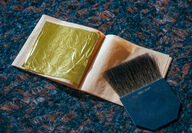
Joining the family of monoelemental crystals first set forth by graphene, Swedish researchers successfully develop the first one-atom-thick metal from gold. Meet goldene, the latest addition to the family of xenes – a remarkable lineage of monoelemental crystals that began with graphene. Like its carbon cousin, gold was synthesized down to a thickness of one atom, which now boasts the distinction as the world's thinnest gold leaf. Since the pioneering discovery of e...

First Tellurium's partnerships promise a safer solid-state technology ready to replace lithium-ion batteries, and a hardy thermoelectric generator. First Tellurium's strategic partners have made headway in the production of two exciting products – a safer lithium-tellurium battery manufactured in partnership with Fenix Advanced Materials and a new tellurium-based thermoelectric generator capable of withstanding temperature extremes while in operation. "This is another key a...

As technology begins to enter the realm of 1990s-era science fiction, researchers from Soft Machines Lab at Carnegie Mellon University have developed a miniature shapeshifting robot that can liquefy itself and reform – basically a prototype of Skynet's cool but terrifying T-1000 robot in "Terminator 2". With assistance from Sun Yat-sen University and Zhejiang University, this liquid metal robot is based on gallium that has been embedded with magnetic nanoparticles. Since g...

Pentagon agrees to invest an additional $34.6 million to establish a domestic source of metalloid critical to military and civilians. To help break America's reliance on China and Russia for the antimony needed for military hardware and munitions, the U.S. Department of Defense has conditionally agreed to invest up to an additional $34.6 million into Perpetua Resources Corp.'s Stibnite gold-antimony mine in Idaho. "This latest award from the Department of Defense brings us a...
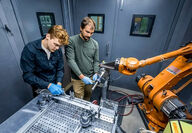
UW researchers explore capacity of tantalum cold spray technology to protect fusion reactors, prevent hydrogen loss. On the coattails of mankind's breakthrough in fusion technology, the University of Wisconsin-Madison is preemptively preparing a technology that could further stabilize the potential energy of a man-made micro-sun with a spray coating technology that could simultaneously maintain temperature integrity while also extracting the very fuel of a star – hydrogen. "...
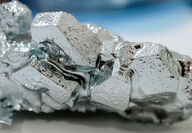
Liquid metal again displays an almost magical ability to become a catalyst for lowering CO2 in the atmosphere A liquid metal with semiconductor properties that make it an essential ingredient in next-generation smartphones, telecommunication networks, and solar technologies, gallium already lives at the edge of science fiction and science reality. Working at this threshold, Australian scientists are demonstrating that gallium may also be a major catalyst for the green energy f...

Going against all known rules of conductivity, researchers from the University of Chicago are astonished by a strange material that can be made like plastic but conducts electricity like metal, being likened to conductive Play-Doh. Conventional electronics, whether it be an iPhone, solar panel, or television, use conductive materials; otherwise, they would be no different than the raw materials they are transformed from. Metals, such as copper, gold, and aluminum, are by far t...

Hoping to gain insights into processes that would create longer-lasting batteries and lighter vehicles, scientists at Pacific Northwest National Laboratory in Washington are investigating the effects of physical forces on metals at the atomic level as they undergo shear deformation. Shear deformation occurs when an object changes shape when forces are applied to it but not in the way of just becoming longer or shorter. The PNNL researchers are taking a direct look at changes...

Researchers at the University of New South Wales Sydney and the Royal Melbourne Institute of Technology recently made a groundbreaking discovery in the use of platinum. By adding just a pinch of this high-priced precious metal to gallium, they created a liquid-metal catalyst with the potential to significantly extend the Earth's reserves of this valuable metal. Platinum is generally very effective as a catalyst but is only used when it is absolutely needed at the industrial...

Skynet's liquid metal T-1000 robot seemed fantastical when the Terminator 2: Judgement Day movie was released in 1991. Fast forward 30 years, however, and researchers at the Chinese Academy of Sciences have created early renditions of shapeshifting soft robots made of liquid gallium infused with magnetic neodymium-iron-boron microparticles. The "robot" is made up of magnetic pixels – particles containing a liquid metal and a neodymium magnet – as well as an elastic matrix mad...
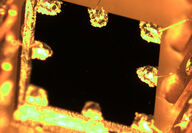
Princeton University researchers have created the world's purest sample of gallium arsenide, a semiconductor used in devices that power cell phones and satellites. From a square no larger than the width of a pencil eraser, the study provided a new perspective into the quantum realm and deep insight into the very nature of electrons. Fashioning the material down to one impurity for every 10 billion atoms, reaching a level of immaculate quality that outstrips even the world's...

Future technology may involve sci-fi transformation techniques like the recently discovered ability to transform metals to semiconductors and vice versa, using the power of the laser. A group of researchers from the Fritz Haber Institute of the Max Planck Society and the Humboldt-University of Berlin have discovered that a laser can convert a semiconductor to a metal and reverse it back in roughly the time it takes light to travel the width of a red blood cell. As most of the...

South Korean scientists have developed a liquid metal silicone composite material that can be stretched to a thickness of less than 50 microns when pulled really slow, snapped in half without stretching when pulled really fast, and can copy a print of the comics from a newspaper. That's right, gallium Silly Putty is now a thing. Commercial silicone putty, better known as Crayola's trademarked Silly Putty, is one of four different materials used to create pastes and putties...

President-elect Joe Biden's plans to spend $2 trillion on infrastructure and move the world's biggest economy toward greener policies is brightening the outlook for base metals, including tougher-than-nails tungsten. Many countries, including the United States, have designated tungsten as a critical metal after China, which accounts for 80% of annual global tungsten production of 85,000 metric tons, have placed restrictions on its exports of the metal. Tungsten is often...
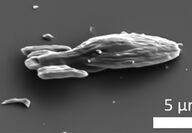
In the name of science, a team of Dutch researchers has 3D-printed a platinum-hulled, microscopic rendition of the Star Trek USS Voyager. The creation of this Intrepid-class starship that measures roughly 15 microns, or about one-fifth the width of an average human hair, is part of a study of how complex shapes affect the motion of microswimmers. While biological microswimmers such as bacteria have complex shapes that allow them to propel through blood and other viscous...

Diamonds are well known as the hardest minerals on earth. The sparkling gemstones also are exceptional thermal conductors and electrical insulators. Now, an international team of researchers says diamonds have yet another distinction – they can exhibit the properties of metals. The discovery, first reported Oct. 5 in the "Proceedings of the National Academy of Sciences," could write a new chapter in the saga of diamonds used in sophisticated technological and industrial a...
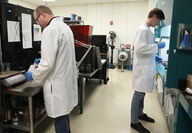
Florida-based Semplastics and its advanced materials division X-MAT dreams of building safer and more durable homes from the waste left behind by coal mining. "'One person's trash is another person's treasure' is a saying our team has taken to heart," said Bill Easter, founder of Semplastics. "We're working to create a circular economy where we take coal waste materials and turn them into something remarkable. We're already seeing great progress with prototypes." Semplastics'...

An international research team from Europe, taking inspiration from nature, have devised a new aluminum-based material that turns the force of a cutting tool back onto itself. This new lightweight material - named Proteus, after the shape-changing god in mythology - is made of ceramic spheres encased in a cellular aluminum structure, that in tests could not be cut by angle grinders, drills and even high-pressure water jets. The research team, led by Durham University in the...

Imagine a small autonomous vehicle that could drive over land, stop, and flatten itself into a quadcopter; well, you don't have to imagine very hard as engineers from Virginia Tech have combined the use of rubber, low melting point metal, and temperature to create a robot that can morph to perform different functions. Nature alone is rife with organisms that can change their shape to achieve different tasks, like an octopus that can dramatically shift and mold itself to move,...

Researchers in Australia and the United States have proven that gallium in its liquid form can economically capture and convert substantial quantities of carbon dioxide greenhouse gas emissions. The process, reported in the Oct. 6 edition of Advanced Materials Journal, uses liquid gallium to convert carbon dioxide into oxygen and a high-value solid carbon product that can be sold to manufacturers of batteries, aircraft, or construction materials. "We see very strong...